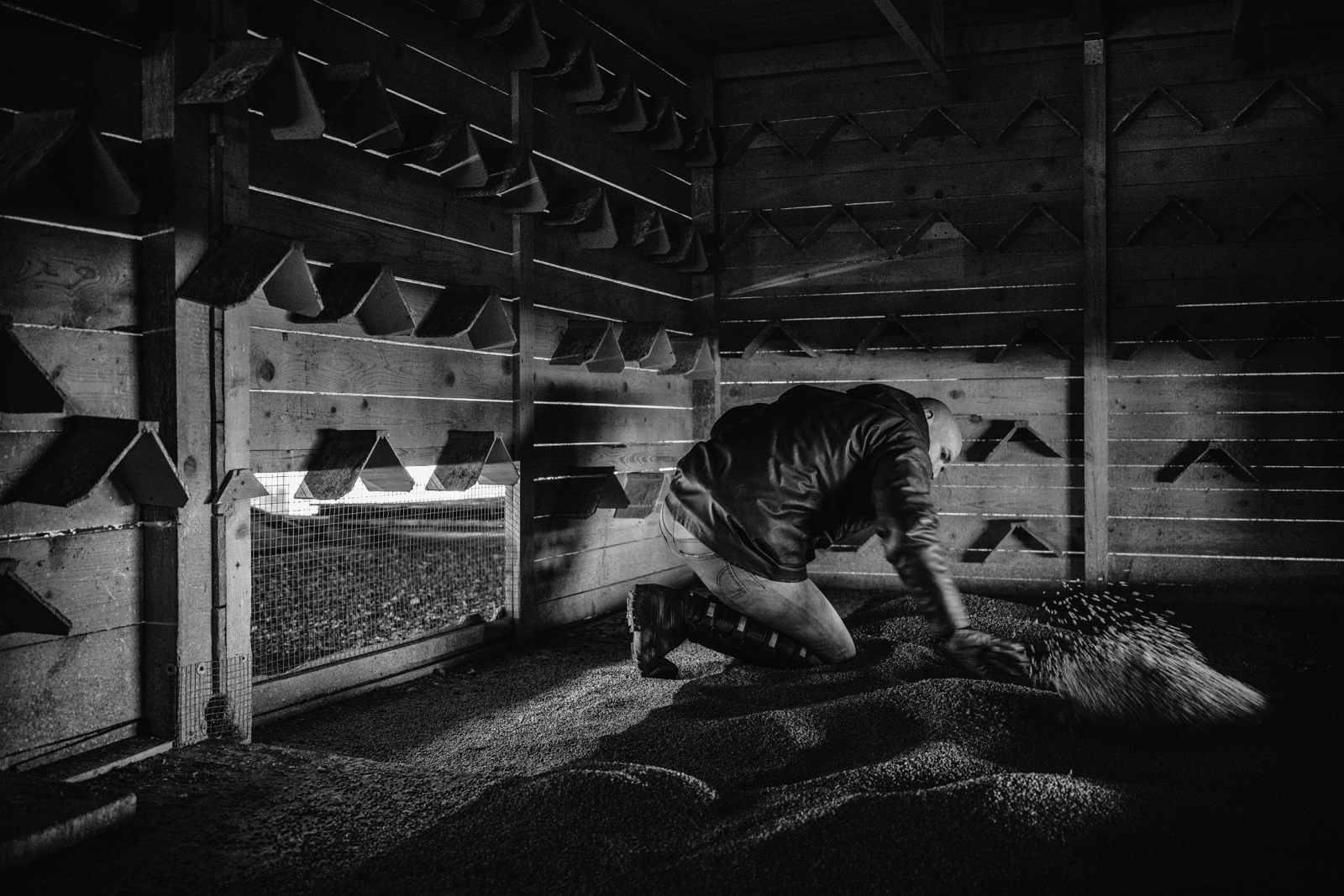Public Story
Ghetto Birds
No other animal helped mankind shape the world as pigeons did. The Ancient Egyptians already used pigeons to spread messages about a new Pharao or other important news. For many centuries armies used the birds’ great orientation skills to exchange messages about tactics. So pigeons contributed hugely in deciding uncountable battles since they were first domesticated about 5000 years ago. Some pigeons even received military honours. But pigeons were not only used as flying mailmen: They have served as a symbol for peace, fertility and for the Holy Spirit since the dawn of Christianity. Mostly thanks to the study of pigeons naturalist Charles Darwin developed his Theory of Evolution. In today's world they mainly serve as trophies in breeding or homing pigeon contests. And as a symbol for misery.
That is where most carrier and racing pigeons end up, because they cannot cope with the strains during races or are cast away by their breeders since they only want to keep the strongest pigeons. Those descendants of domesticated pigeons nest in buildings' ledges or underpasses, an environment they have adapted to like homeless people and where starvation is the main reason of death. Ledges and underpasses serve as a substitute for their ancestors' original breeding habitats on cliffs and mountains since so-called city or feral pigeons derive from the domesticated rock pigeons. They are doomed there to a diet mostly consisting of bread crumbs and puddle water, and they depend on the mercy of a few who risk heavy fines by the authorities but keep feeding pigeons by conviction. That pigeons can become a plague in cities remains indisputable. But it was mankind who pushed the now-called “flying rats” in their miserable existence and has bred them for generations so that they can have offspring up to eight times year what causes the high numbers of city pigeons in the first place. While real rats prefer life in the gutters, city or feral pigeons are eternal prisoners inside their urban wilderness.
Most of the time men fights pigeons with spikes, nets, cages, poison, hawks or pure sadism. But conventional bird defence methods have proven to be ineffective and most myths about diseases that pigeons carry fictional. The Frankfurt-based pigeon activists from the ‚Stadttaubenprojekt‘ follow a different path in dealing with street pigeons. They operate three dens in downtown Frankfurt where they provide food to the birds and a save place to live and breed. Once the pigeons lay eggs inside the dens the activists exchange the real eggs with dummies to ethically reduce the pigeon population. The method also helps to decrease risk for diseases among pigeons and it helps the remaining pigeons to find more food. Gudrun Stürmer, head of the 'Stadttaubenprojekt‘, and her colleagues also pick up sick and injured pigeons that have been found in Frankfurt or neighbouring cities. Those birds are brought to the ‚Gnadenhof‘, a one-of-a-kind pigeon sanctuary on the outskirts of Frankfurt. Fighting to improve city pigeon‘s existence and their public image, the ‚Stadttaubenprojekt‘ encounters many bureaucratic barriers, other animal conservationists who distinguish "pigeons and animals" and a kind of hatred that men nurtures for no other creature. Shiny Frankfurt poses as the perfect example for the absurd war against men‘s symbol of peace and one of its oldest companions.
My original plan in November 2017 was to document the work of the ‘Stadttaubenprojekt’. But I noticed that there is bigger story to tell about pigeons, a story that tells more about men than about birds. For more than one year I immersed myself in the ‘Stadttaubenprojekt’, I met pigeon breeders, feeders and visited a pigeon race and a pigeon market. I would like to tell how those animals became an issue and how men can ethically solve the problem he created.


























